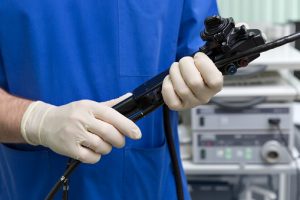 New research suggests that even after multi-step cleaning an endoscope may still contain harmful bacteria. The study showed that the endoscopes were properly cleaned according to guidelines and yet bacteria lingered.
New research suggests that even after multi-step cleaning an endoscope may still contain harmful bacteria. The study showed that the endoscopes were properly cleaned according to guidelines and yet bacteria lingered.
An endoscope is a medical device that is used to explore the insides of the digestive tract. It is put into the body through the mouth and goes down into the stomach.
Advertisement
The latest findings come from researchers at Ofstead and Associates Saint Paul, Minnesota and the Mayo Clinic. They sampled 15 different colonoscopes, which were used 60 times. A checklist was used to ensure proper steps were being followed when cleaning the colonoscopes.
Cleaning procedures consisted of: Bedside cleaning, manual cleaning in repurposing rooms and automated endoscope reprocessing with a high-level disinfectant. Post-cleaning, the endoscopes were stored vertically after drying. If contamination levels were high, technicians would clean the endoscope numerous times.
Researchers performed tests to pick up on viable organisms and organic residue that may still be present on the endoscope after cleaning. Among 92 percent of devices, viable organisms were found after bedside cleaning, 46 percent after manual cleaning, 64 percent after high-level disinfection, and nine percent after overnight drying. Rapid indicator tests revealed contamination above benchmarks on 100 percent of devices after bedside cleaning, 92 percent after manual cleaning, 73 percent after high-level disinfection and 82 percent after overnight drying.
“This study demonstrates that colonoscopes and gastroscopes can harbor residual organic material, including viable microbes, even when adherence with recommended reprocessing guidelines is verified,” said the study’s authors.
“More research is needed to identify processes that can ensure all flexible endoscopes are free of residual contamination and viable microbes prior to patient use, including the potential use of routine monitoring with rapid indicators and microbiologic cultures. Results from this study suggest that current standards and practices may not be sufficient for detecting and removing residual contamination.”
Advertisement
The authors noted they used a single-site so the information may not be applicable nationwide. During the study technicians were aware that a checklist was being used to evaluate them, so quality may have gone up and technicians were aware if benchmarks were high, prompting them to conduct a second repurpose, which is not standard protocol.
The study was published in the American Journal of Infection Control.
Source:
http://www.ajicjournal.org/article/S0196-6553(15)00148-0/abstract
